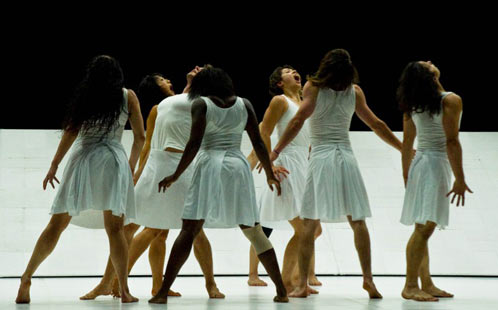Researchers and Australian Dance Theatre bottle the essence of creativity

A groundbreaking research project exploring distributed thinking and creativity will bring together a team of international researchers from the University of Western Sydney and beyond with dancers from Australian Dance Theatre.
Titled "Thinking Brains and Bodies", the project begins with the idea that thinking is not restricted to the brain of an individual but can be distributed across a group.
At the Hawthorn Studio over a three-year research project, psychologists will investigate where creativity resides, how collaboration impacts innovation and what fosters group recollection.
The Project leader, Professor Kate Stevens from the UWS MARCS Institute, says the outcomes will have application not only within the Arts community, but across a range of broader industries.
"Dance is often considered a non-verbal art form mainly experienced through movement and intuition, but in both creation and performance it draws from deeply multi-modal processes where sensation, perception, emotion and action are entangled in skills such as imagining, problem solving, recollecting and communicating," says Professor Stevens.
"This project points the microscope on the situated world of dance and the collaborative nature of this particular ensemble."
"These dance processes are universal, and I expect that the results will have application not only to the arts but to innovation and problem solving in education, IT and business."
Psychologists are keen to harness creative industries because of their long-held interest in understanding innovation and organisations.
A contemporary dance studio, a place where the choreographer and dancers collaborate and improvise to generate new ideas, offers a real-world setting to record and analyse behaviour and the 'distributed and embodied thinking' which psychologists agree leads to creative outcomes.
Throughout the research, with the support from the Australian Research Council Linkage Project scheme and Australian Dance Theatre, the team will record studio processes and conduct experiments involving the dancers.
"Experiments will include investigating the flow of creative thinking to see when new ideas emerge during the improvisation process," says Professor Stevens.
"We will study solo versus collaborative scenarios, analyse group recollection, and investigate whether dancers have a heightened sense of one's own body in space and through touch."
This project builds on research conducted through leading contemporary dance companies such as Wayne McGregor|Random Dance in London and The Forsythe Company.
The Artistic Director of the Australian Dance Company, Garry Stewart, says he's thrilled to join such distinguished company.
"I believe it is so important to engage with scientific ideas to advance contemporary artistic practice," he says.
"To research new ideas around creative and collaborative processes that can also impact thinking in other domains such as education and social policy is within the ambit of what we strive to do – evoke new ideas that change the way society views the assumptions on which it is founded."
This project tackles complex research problems and as such needs scrutiny from many perspectives. The research team lead by Professor Kate Stevens includes; dance researchers Dr Scott deLahunta from Coventry University and Motion Bank, The Forsythe Company, Professor Kim Vincs from Deakin University, anthropologist Professor James Leach from the University of Western Australia, cognitive neuroscientist Professor Mike Nicholls from Flinders University, and cognitive scientist Professor David Kirsh from the University of California, San Diego.
Ends
3 March 2014
Photos courtesy Australian Dance Theatre
Mobile options:

